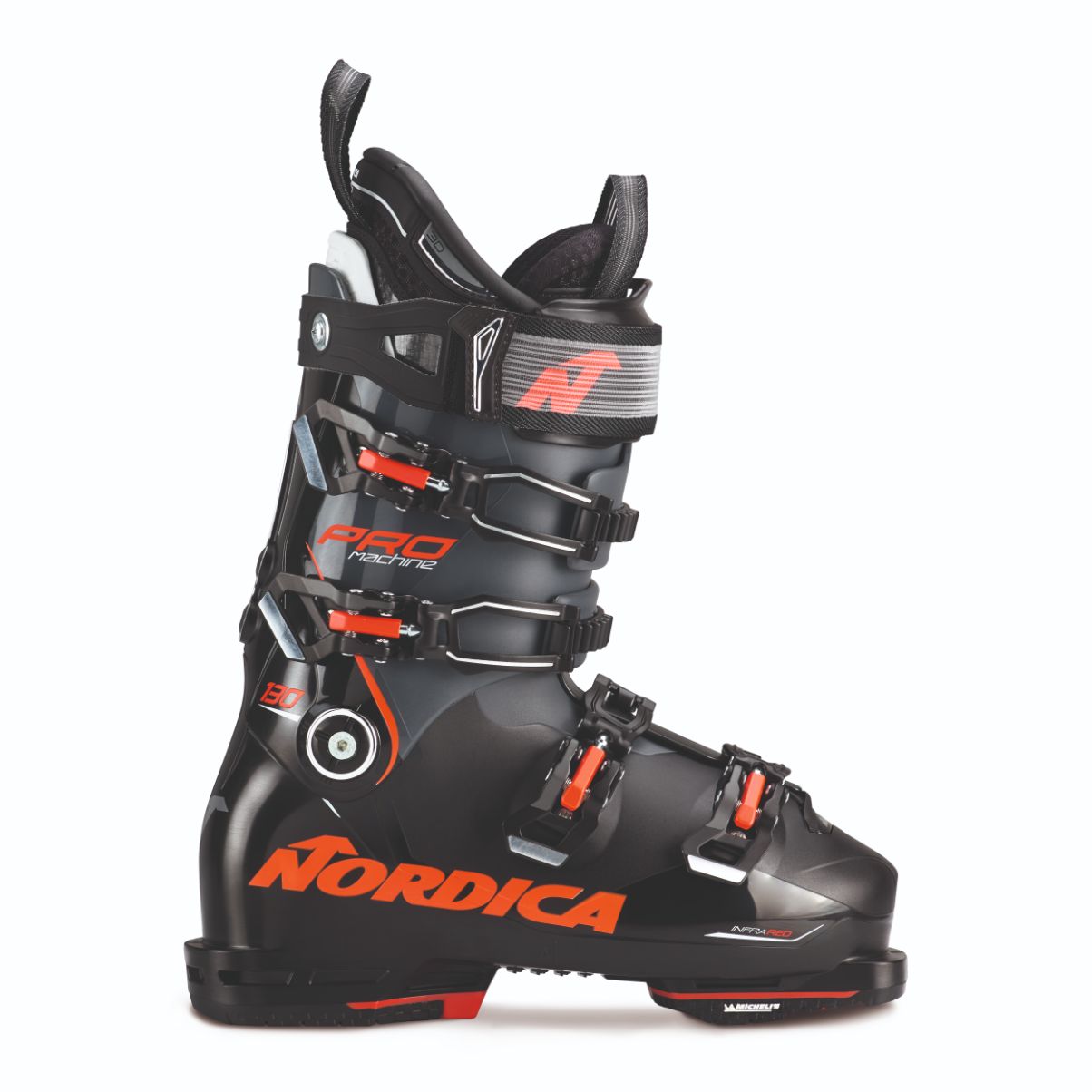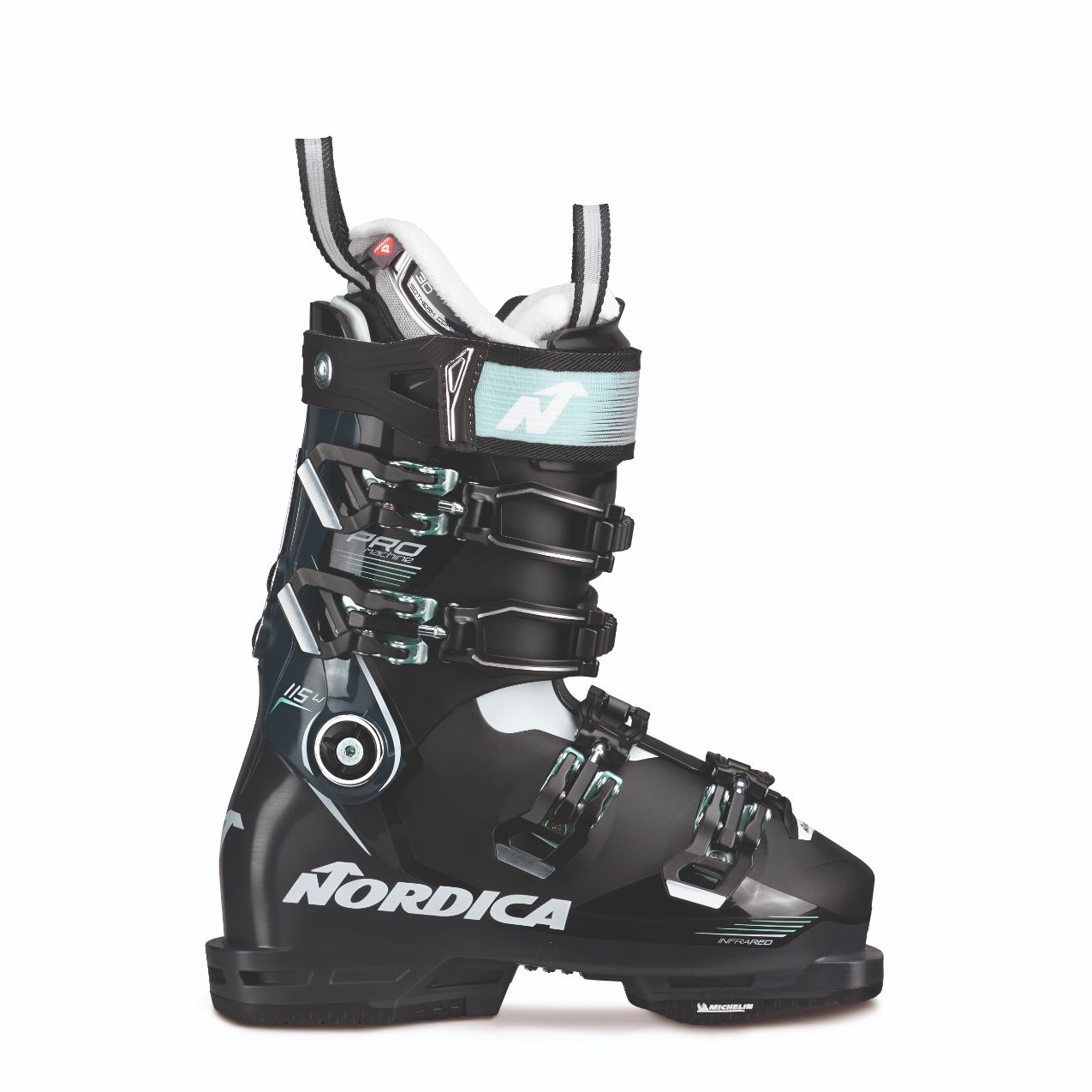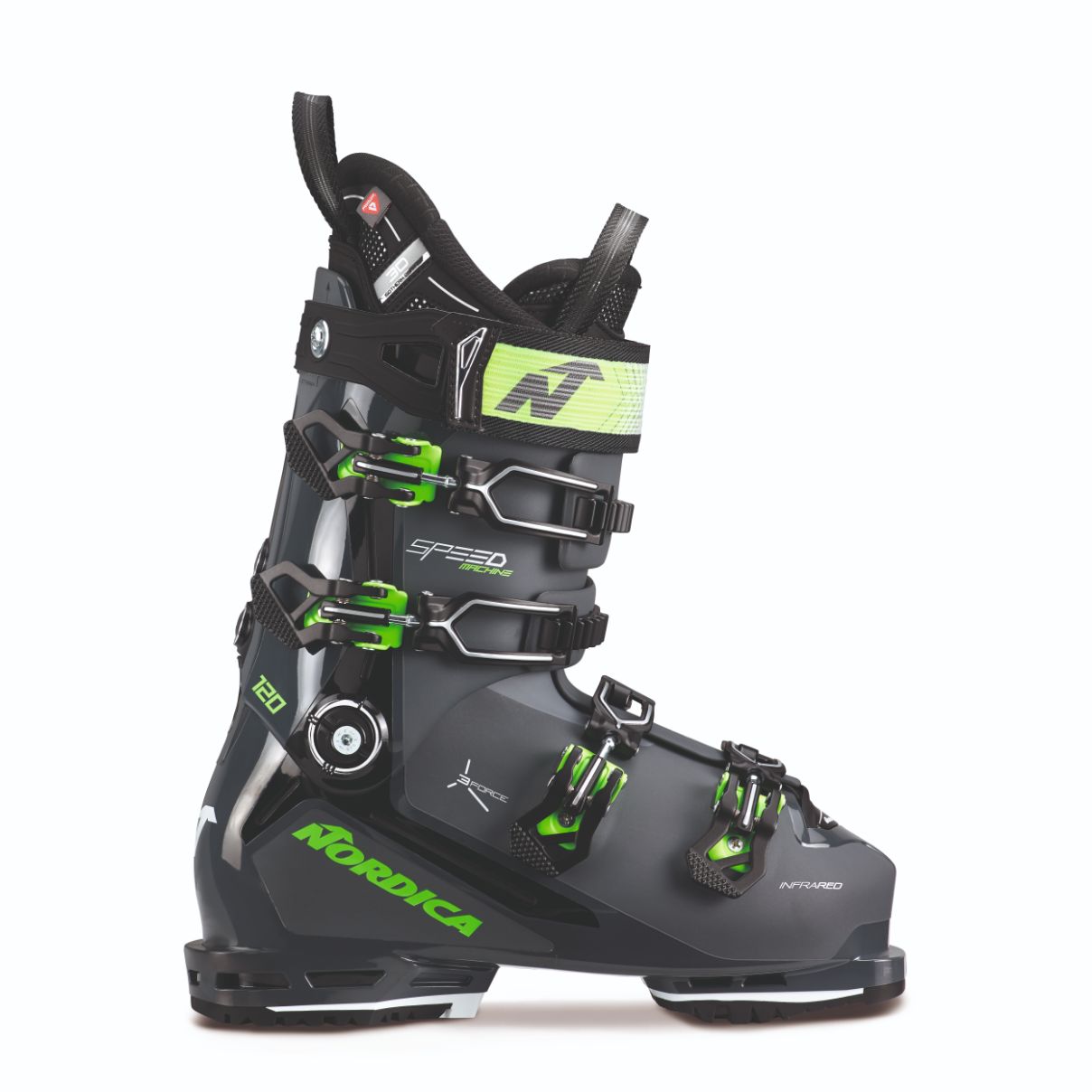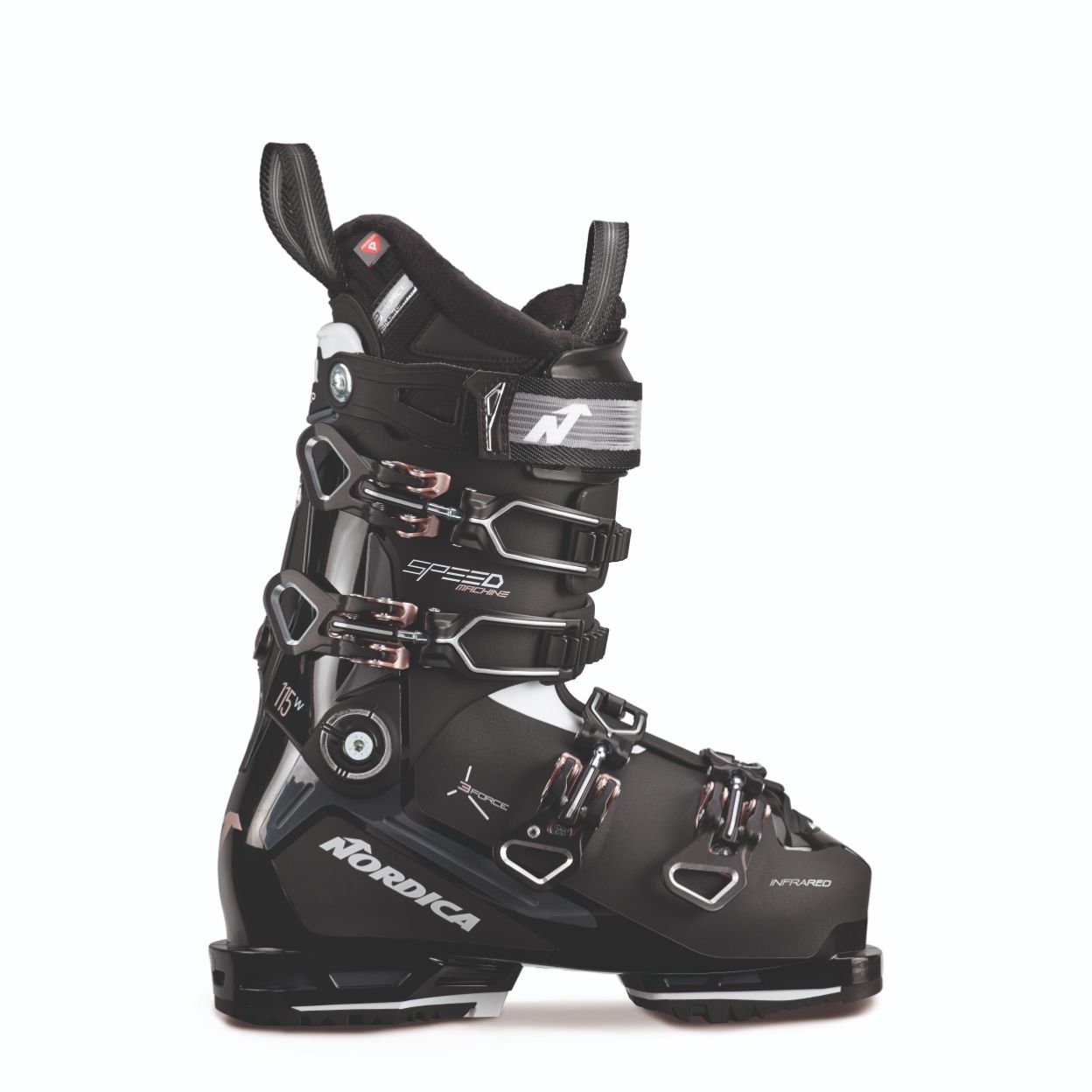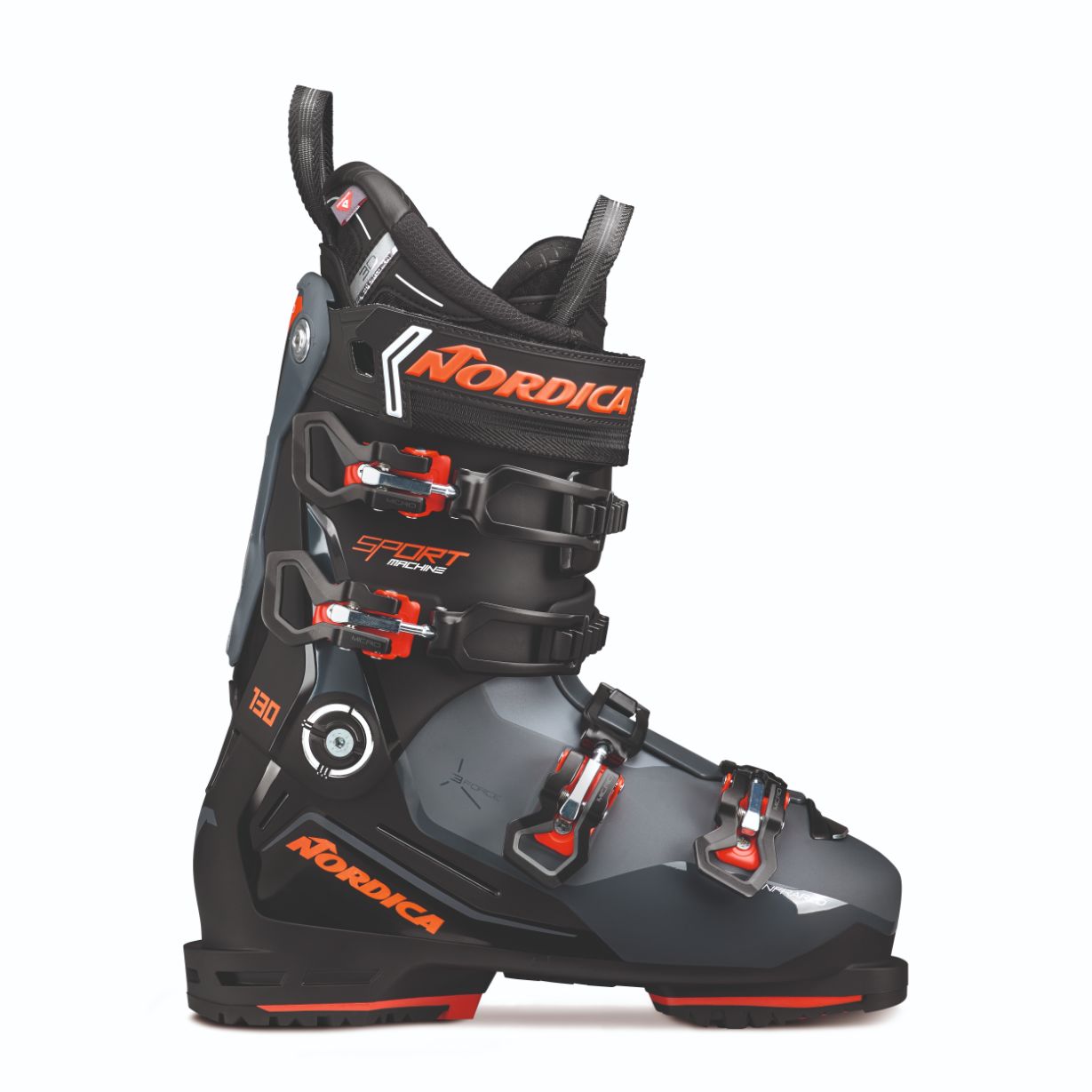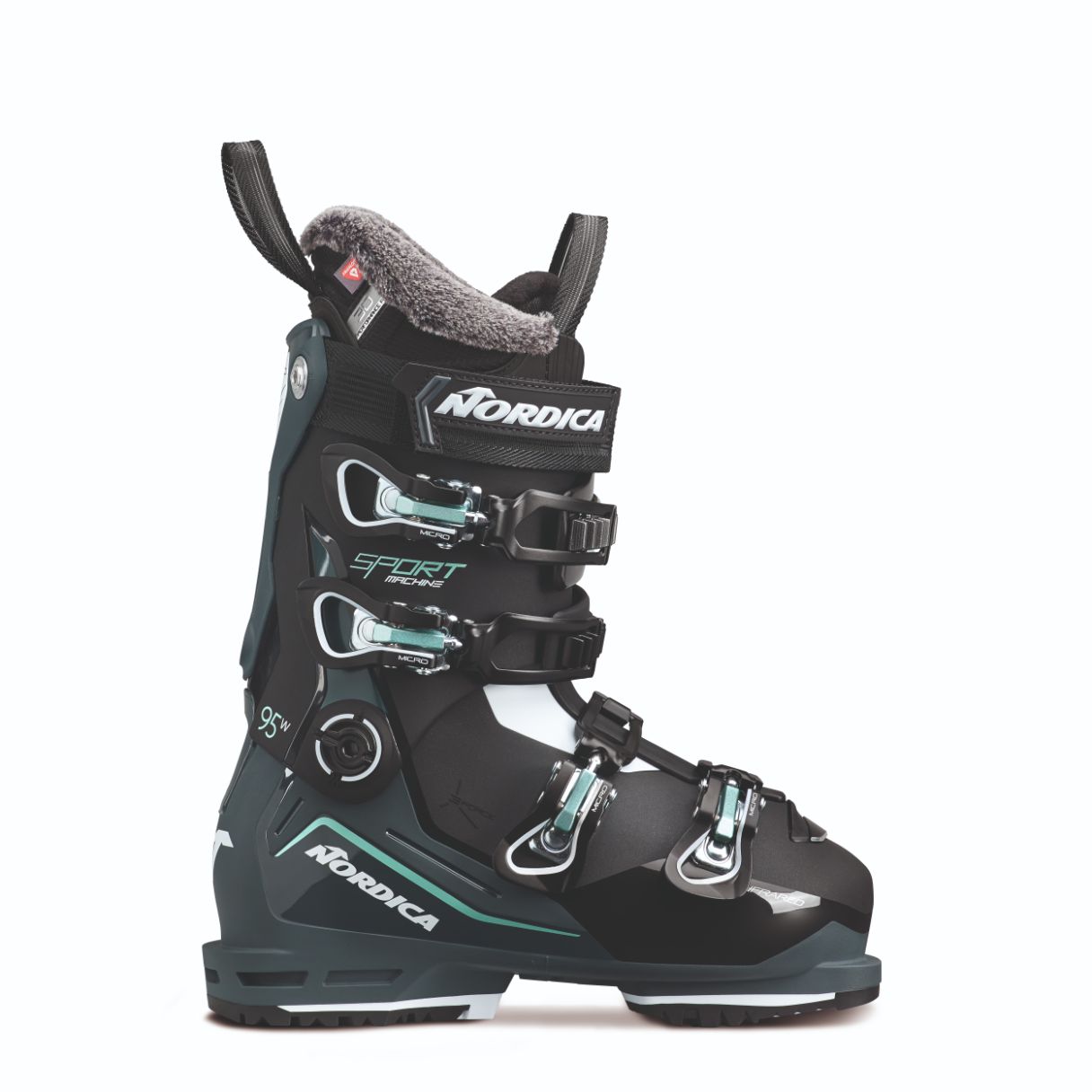No other leather boot maker profited more from the transition to injected plastic shells than Nordica. During most of the 1970’s and 80’s, Nordica’s unit share of the world market was so dominant the only competition was for second place. It responded to the surge in sales generated by Salomon’s wildly popular rear-entries by concocting a blizzard of convenient-entry alternatives populating every price point. By the close of the 80’s, almost all of Nordica’s line was made up of RE’s of one ilk or another.
When Nordica was sold to cotton sweater maker Benetton, it marked the beginning of the brand’s slide off its pedestal. Benetton drove the brand downward before selling it back at an eyebrow-arching loss to the Vaccari family who had owned it before Benetton’s disastrous stewardship. The rise back to relevance hasn’t been unperturbed, but by rebuilding its core line segment by segment, Nordica has returned to the first rank of boot makers. Its resurgence matters not just to the Tecnica Group that currently owns the brand, but to the ski trade at large. The ski industry fares better as a whole when its marquee brands excel.
Nordica’s renaissance in the recreational boot market began seven years ago with the introduction of a new boot with an old name, Speedmachine. The new Speedmachines were (and remain) classic, 4-buckle overlaps with a generous, medium volume (100mm) shell and saleable features such as moldable shells and cork-covered liners. Most importantly, the out-of-the-box fit was luscious, rendering modifications mostly moot. Speedmachine spawned the wide-lasted (102mm) Sportmachine five years ago and in 2019 the final shoe in the series dropped with the debut of Promachine.
While it’s fair to say Sportmachine is a wider version of Speedmachine, Promachine is more than just a narrower one. Speedmachine is aimed squarely at the middle of the market; Promachine intends to attract a better class of skier. (It’s an elitist sport, what can I say?) All the comfort and customization features are retained in the Promachine, but the 98mm-lasted liner is more accurate and the shell delivers steering power on a par with 130-flex race boots. Race boots don’t have Gripwalk soles, however, which are standard on the Promachine 130 and available for Speedmachine and Sportmachine models. For all-terrain, recreational skiers, Gripwalk is a more convenient option.
All three Machine lines include a full complement of women’s models with women-specific cuffs and liners. All women’s models (and most of the men’s) use Primaloft® insulation to keep tootsies warm and dry.
Five years ago, Nordica returned from a several season sabbatical from making a hike-mode (HM) boot when it unveiled the results of its research, Strider. Strider models deliver outstanding downhill performance in a four-buckle boot with all the requisite HM elements: skeletal buckles, a huge 46o ROM in hike mode and Grilamid® for the minimal mass hauling one’s butt uphill requires. The heavily treaded sole was developed in collaboration with Michelin, so you know it has some serious traction. For 2021, the Strider Pro 130 was joined by lighter weight clone, the Strider Elite 130, which tips the scales at 1790g (26.5) versus the Pro’s 1910g.
But it isn’t the Striders’ uphill features that grab your attention, but the accurate fit of its 100mm last and most of all, the ski-ability. The Strider models are top-notch shoes for their ascent properties, but you’re reading about them here because they are in the first rank for downhill performance.
Anyone who races knows that Nordica doesn’t need to inflate its resume to establish its credibility in this domain. Great racers of a bygone generation hoarded secret stashes of the venerable Grand Prix, and if Nordica ever stops making their Dobermann line of undiluted race boots, they’re also likely to be black market booty the instant they’re officially retired. With the arrival of Promachine, Dobermann spin-offs like GPX became redundant, but Dobermann World Cup boots (93mm last) aren’t going anywhere and neither are the Dobermann GP’s, citizen versions in a more user-friendly 98mm last and DIN standard soles that don’t have to be ground.
Having rejuvenated its core collection over a five-year rollout, Nordica didn’t mess with its success in 2021. It left most of its line intact, with one notable addition: the return of a rear-entry boot after abandoning the concept a quarter of a century ago. The HF series consists of four models, two men’s and two women’s, two with built-in heaters and two without. The last is wide (102mm) and the flex is soft (85), so it’s clear high performance isn’t the prime objective; rather, it’s the ability to slip it on and off that’s the HF’s (for Hands Free) calling card. If your ankle range of motion is kaput, the HF design will let you keep skiing, a blessing for those who need all the help they can get putting their boots on. Nordica expanded its HF family in 2022, adding a HF120 Pro, HF 100 and HF 75 W for women.
As noted above, Nordica’s renaissance began with the Speedmachine series that debuted 7 years ago, which means Nordica was working on the Speedmachine 3 series for six years preceding its launch last year, and the extra time spent on R&D shows in a much-improved product. The Speedmachine 3’s 3Force Technology liner and shell achieve a better integration of skier, liner and shell in a lightweight, soft-flexing shell in a medium last. Even the stiffest components of the 3Force frame are molded in a honeycomb to reduce weight. The liner and tongue represent considerable upgrades over the first generation, with an EVA insert in the ankle area and an adjustable tongue. Gripwalk soles are standard, of course.
A mere recitation of features doesn’t do justice to the instantly better-fitting Speedmachine 3 design and its vastly improved on-snow performance. The new boots are much more accurate in every respect, without over-serving the recreational skier for whom they’re designed.
For the 22/23 season, Nordica has applied the same treatment to its entire Speedmachine clan and its wide-lasted (102mm) Sportmachine 3 collection. These are important model renovations, as the lower price points served by the Speedmachine 3 110, 100, 95W and 85W mean lower skill skiers won’t have to settle for a mediocre fit and meh performance. The Sportmachine 3 upgrade also benefits a long-neglected skier type, those lads and lasses with large feet. High-volume boots are often cavernous, shapeless arenas; Sportmachine 3 retains the accurate fit of the Speedmachine 3’s, just modeled on slightly larger dimensions.
The arrival of Sportmachine 3 signals the completion of a design cycle that began with the first Speedmachines 7 seasons ago. If our tea-leaf reading is accurate, we’ll be touting a new generation of Promachines in this space a year from now. Stay tuned.

